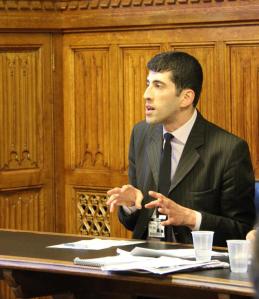
Armenian President Serzh Sargsyan, (centre), in military fatigues on the Nagorno-Karabakh frontline in 2012.
The incumbent Armenian President and favorite in next month’s Presidential election, Serzh Sargsyan, was born on 30 June 1954 in the then-Nagorno-Karabakh Autonomous Oblast, where he was an active member of the Komsomol Communist Youth organisation and Secretary of its local branch and later became Assistant to Genrikh Poghosyan, the First Secretary of the Nagorno-Karabakh Communist Party Regional Committee.
During 1972-1974, he served in the USSR armed forces. In 1979, he graduated from the Philological Department of Yerevan State University.
As Head of the Nagorno-Karabakh self-defence forces Committee from 1989-93 he was an active participant in the fighting with Azerbaijani forces that led to the region’s separation from Azerbaijan. In 1990, Serzh Sargsyan was elected as a deputy to the Supreme Council of Armenia. From 1993 to 1995, he was the Minister of Defence of the Republic of Armenia. From 1995 to 1996, he was the Head of the Republic of Armenia State Security Department and, later, the Minister of National Security. From 1996 to 1999, he was the Republic of Armenia Minister of Interior and National Security. In this position he was instrumental in helping his old friend from Nagorno-Karabakh, Robert Kocharian, who was then the President of the territory, to move to Yerevan where he eventually became President after President Levon Ter Petrosyan was forced to resign.
Under Kocharian, Sargsyan served as Minister of Defence and Secretary of the National Security Council and was appointed Prime Minister in 2007. After Kocharian second term ended Sargsyan contested the 2008 election which he won in the second round, amidst opposition claims of election fraud.
Those who have observed Serzh Sargsyan political career over the last two decades say that he is essentially a “soviet style military man who has understood the need for reform”. He has been able to manage expertly the rough and tumble of Armenia political life, managing first the transition from Ter Petrosyan to Kocharian, and later his own transition to the Presidency. He is well aware of Armenia’s challenges and limitations and is subsequently a pragmatist. When in 2007 he emerged from the relative shadow of appointments in the military and security sides of government to become Prime Minister, he embraced reform as a necessity. He pursued it cautiously but not without vigor. This has also been the hallmark of his presidency since 2008. More…





